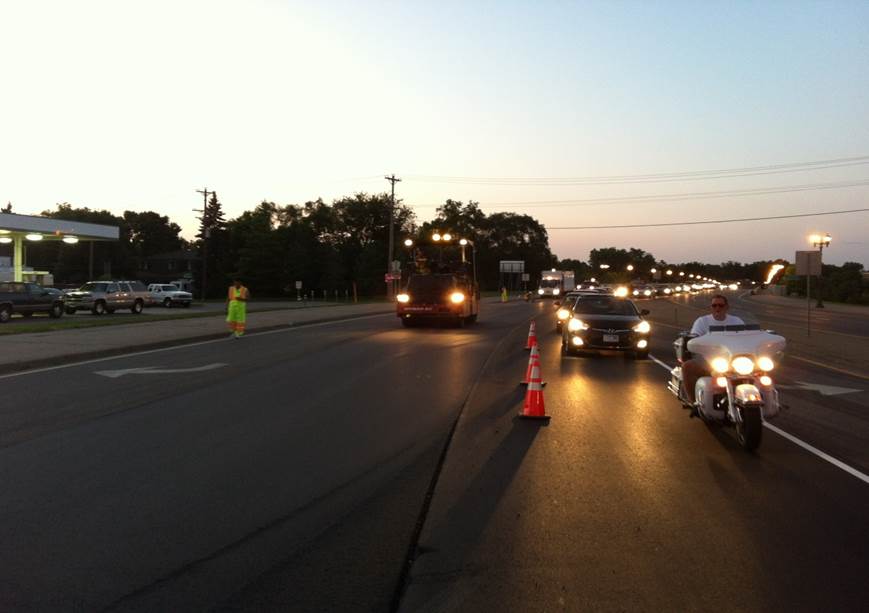On July 10, 2012, 2-inch mill and overlay was applied by Valley Paving Co. on southbound outside lane of TH 169 State Highway in Champlin between the Mississippi River and Hayden Lake Road using WMA mixtures with LEADCAP. The LEADCAP section is on the outside lane from the river to the sharp corner (Past the sharp corner to Hayden Lake Road is HMA). The Superpave wear course with 12.5-mm mix with PG 64-28 for a traffic level 4 (3-10 million ESALs) was used along with 25% RAP. The HMA was produced at 320°F whereas the WMA was produced at 275°F. A total of 1,400 tons of asphalt mixtures were used (a half HMA and a half WMA). Based on the MOBA Bar PAVE-IR device, the mix temperature of the WMA mat was more consistent with than the HMA. The WMA was easier to reach a 94% density with fewer passes. The contractor applied only 4 passes of breakdown roller (vibratory steel double drum), then pneumatic and finish rollers whereas they applied 6 passes of breakdown roller, then pneumatic rubber tire and finish rollers. The field density during construction was continuously monitored using the PQI non-nuclear device, which confirmed that the target density of WMA mat was achieved with less passes of a roller than HMA. An average bulk specific gravity of laboratory-compacted field WMA mixtures was 2.406 and an average maximum specific gravity was 2.499, resulting in an average air void of 3.72%. An average bulk specificity gravity of laboratory-compacted field HMA mixtures was 2.426 and average maximum specificity gravity was 2.521 resulting in air voids of 3.77%. A total of eight cores were made (two cores from each of four different spots) and a Valley Paving company measured densities of four cores and Minnesota DOT measured the other four cores. The average field densities of four WMA and HMA cores measured by the contractor were 2.353 (2.361, 2.305, 2.373 and 2.372) and 2.388 (2.408, 2.427, 2.392 and 2.324), resulting in average field voids of 5.85% and 5.29%, respectively. The average field densities of four WMA and HMA cores measured by the agency were 2.348 and 2.370, resulting in average air voids of 6.05% and 6.01%, respectively. One of the WMA cores (with a density of 2.305) was from the existing roadway in a terrible condition with a serious subgrade issues. Therefore, when the contractor compacted the WMA overlay in this segment, they chose to do the only static roll to eliminate the potential for the roadway to sink. Bulk specific gravity densities and percent density of both WMA and HMA are summarized in the table below.
|
Contr. Agency |
WMA |
2.361 2.362 |
94.0 94.0 |
|
Contr. Agency |
WMA |
2.305 2.279 |
91.8 90.7 |
|
Contr. Agency |
WMA |
2.373 2.377 |
94.5 94.6 |
|
Contr. Agency |
WMA |
2.372 2.373 |
94.4 94.5 |
|
Contr. Agency |
HMA |
2.408 2.393 |
95.6 95.0 |
|
Contr. Agency |
HMA |
2.427 2.430 |
96.4 96.5 |
|
Contr. Agency |
HMA |
2.392 2.360 |
95.0 93.7 |
|
Contr. Agency |
HMA |
2.324 2.295 |
92.3 91.1 |

